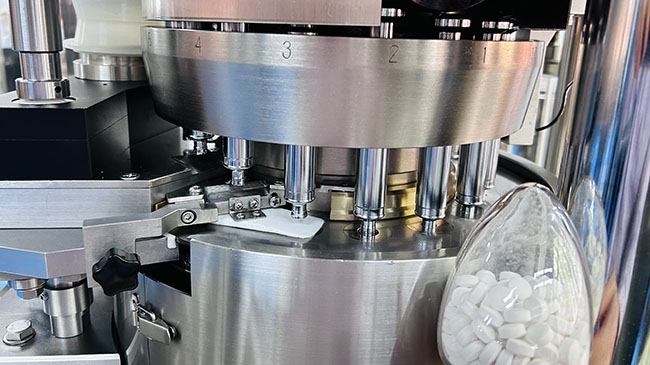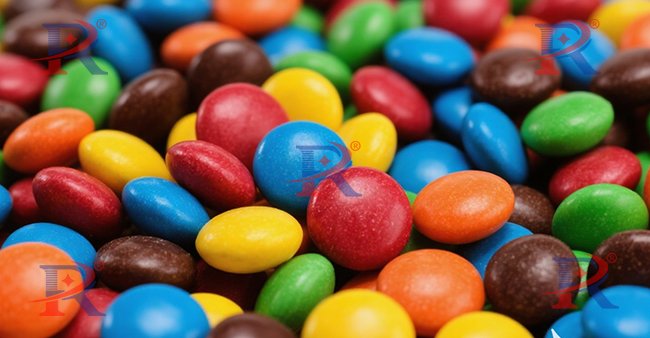When people type how are vitamins made into a search bar, they’re usually imagining a mysterious factory where colorful pills roll off endless conveyor belts. In reality, the story behind your daily multivitamin is a mix of nutrition science, strict quality rules, and very precise machinery. Understanding how vitamins are produced not only satisfies curiosity — it also helps you choose safer, more effective products. This guide walks you through the full vitamin manufacturing process, from ingredient sourcing to filling bottles, with plain language and real-world explanations.
1. What Do We Mean When We Ask “How Are Vitamins Made”?
Before we dig into how vitamin supplements are manufactured, it helps to clarify what we’re actually talking about.
When you buy “vitamins,” you’re usually getting vitamin supplements in one of these forms:
- Tablets – the classic compressed pills
- Capsules – powder or tiny pellets inside a shell
- Gummies – jelly-like chews, often for kids (and adults who hate pills)
- Powders – to mix into water, smoothies, or shakes
- Liquids or drops – often for infants or people who can’t swallow pills
All of these have two big components:
- Active ingredients – the actual vitamins and minerals (like vitamin C, D, iron, zinc).
- Excipients – “helper” ingredients that make the product stable, safe, and easy to manufacture, like binders, fillers, sweeteners, and coatings.
So when we ask how are vitamins made, we’re really asking:
- Where do the vitamin ingredients come from?
- How to design a vitamin to work for someone like me?
- How do vitamins go from raw powder to finished bottled products on the market?
- How do I know whether my vitamins are safe and reliable?
- What guarantees that each vitamin product delivers the exact amount of every ingredient?
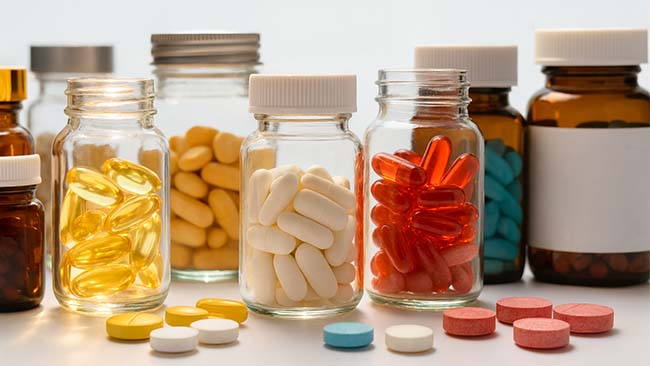
2. Where Do Vitamin Ingredients Actually Come From?
Understanding the manufacturing journey of vitamins requires looking back to their origin as raw materials. They don’t simply take their final form as tablets or capsules.
Most supplement ingredients come from one of three routes:
- Natural extraction
- Example: vitamin E from vegetable oils, vitamin A from fish liver oil.
- Plants, animal sources, or yeasts are processed to concentrate a specific vitamin.
- Fermentation
- Microorganisms (like specific bacteria or yeasts) are “fed” and grown in tanks.
- They naturally produce vitamins such as certain B vitamins, which are then purified.
- Chemical synthesis
- Some vitamins are made through controlled chemical reactions.
- The end product is designed to match the molecular structure of the vitamin your body uses.
Table: Three Primary Sources of Vitamins Used in Supplement Manufacturing
| Vitamin Source Type | How It’s Made / Obtained | Pros | Cons | Common Examples |
| Natural (Plant / Animal Derived) | Extracted from fruits, vegetables, herbs, fish liver, yeast, etc. | Perceived as more “natural”; may contain cofactors & phytonutrients | Higher cost; lower yield; potency varies | Vitamin C from citrus, Vitamin D from fish oil |
| Synthetic (Lab-Made) | Produced through chemical synthesis in controlled environments | Stable, high purity, lower cost, consistent potency | Some consumers prefer “natural”; requires strict QC | B-vitamins, Vitamin C, Folic acid |
| Microbial Fermentation | Created using bacteria, yeast, or fungi fermentation | Eco-friendly; scalable; good bioavailability | More complex manufacturing | Vitamin K2 (MK-7), some B-complex vitamins |
When consumers wonder how vitamins are produced, they often imagine only “natural” sources. In practice, many vitamins are bioidentical — their structure is the same whether they were extracted from a plant or made through fermentation or synthesis.
3. Formula Design and Testing
Before any production takes place, it all begins with creating the formula. This ensures that the vitamin will be effective, safe, and suitable for the intended consumer.
- Nutrition experts and product developers decide which nutrients to include, at what doses, and in what form (tablet, capsule, gummy).
- They consider bioavailability (how well your body can absorb it), interactions between ingredients, and the target consumer (kids, athletes, seniors, etc.).
At this stage, small lab batches are created to see if the powders flow well, compress properly(For tablet), and remain stable during shelf-life testing. This is a key part of the vitamin product development process.
4. Inside a Vitamin Factory: Step-by-Step Production
Now let’s walk through the factory and see the manufacturing process behind vitamin supplements
Step 1: Raw Material Inspection
Once ingredients arrive at the factory, they don’t go straight into production.
- Each lot of raw material is checked for identity (is it really vitamin D3?), purity, and strength.
- Testing facilities examine ingredients to ensure they are free of metals, microbes, and solvent remnants.
- If a batch fails, it’s rejected and never enters production.
This is where cGMP certification (Good Manufacturing Practice) comes in. Facilities that follow cGMP have documented procedures so every lot of vitamins starts with safe, tested ingredients.
Step 2: Weighing and Mixing
Next, the approved powders go to the weighing and mixing area:
- Workers (or automated systems) weigh each ingredient according to the formula.
- Powders are loaded into large mixers to mix until the vitamin, mineral, and excipient particles are evenly distributed.
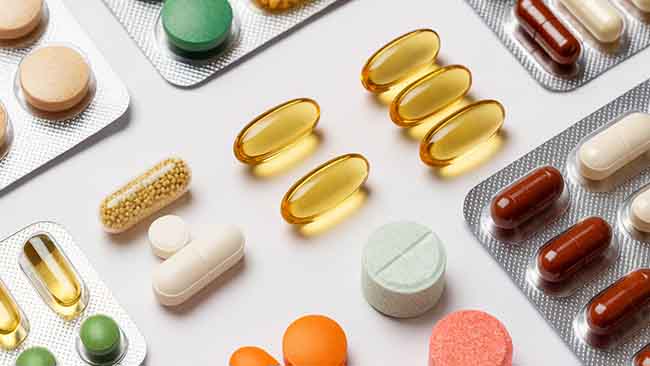
Step 3: Turning Powders Into Final Dosage Form
At this point, the blended powder is ready to be converted into its final dosage form. The two primary routes for this are compression into tablets or encapsulation into capsules.
Tablets
For tablets, the blend goes into a high-precision tablet press machine:
- The powder is fed into a set of small, precisely shaped molds called “dies”.
- Two powerful metal punches (upper and lower) compress the powder inside the die with immense force.
- The compressed powder is ejected from the machine as a solid, ready-to-use tablet.
Capsules
For capsules, the blend goes into an automatic capsule filling machine:
- Empty capsule shells (gelatin or plant-based like HPMC) are separated into two halves.
- The equipment dispenses an exact quantity of powder into every capsule shell.
- The capsule cap is joined back onto the body and locked.
Much of the “magic” happens in these machines that can fill thousands of capsules per minute with strict accuracy.
Step 4: Coating, Polishing
The compressed tablets and filled capsules now undergo their final finishing steps.
• Tablet Coating: Select tablets receive a thin, protective polymer coating to make them easier to swallow, control release, or improve stability.
• Capsule Polishing: Filled capsules are gently polished to remove any residual powder, ensuring a clean and glossy appearance.
Step 5: Counting, Filling, and Packaging
Finished tablets, capsules, or gummies are then typically sent to packaging lines:
- A tablet counting machine or capsule counting machine makes sure each bottle receives the right number of pieces.
- Bottles are filled, desiccants (little moisture-absorbing packets) may be added, and caps are applied.
- prints labels along with batch codes and expiration dates.
From a consumer point of view, this is where how are vitamins produce becomes “the bottle you pick up on a store shelf.”
5. Quality and Safety: How Are Vitamins Tested?
A big part of how modern vitamins are produced safely is what happens in the lab:
- Potency testing – checking that the label claim (e.g., 1000 IU vitamin D) matches the actual content.
- Microbiological testing – making sure no harmful bacteria or mold are present.
- Heavy metal testing – detecting metal hazards such as arsenic, lead, mercury, and cadmium.
- Stability testing – storing samples under different conditions to confirm they stay effective until the listed expiry date.
Brands that follow strict quality control for vitamin supplements usually highlight things like:
- “Manufactured in a cGMP-certified facility”
- “Third-party tested for purity and potency”
These phrases are more than marketing; they reflect real steps built into how daily vitamins are created in modern factories.
6. The Machines Behind Vitamin Production
Behind every bottle of vitamins is a range of advanced machinery ensuring efficiency and precision in production:
- Tablet press machine – compresses powder into tablets rapidly and efficiently.
- Capsule filling machine – accurately fills and locks capsules with powder or pellets
- Tablet counting machine or capsule counting and filling machine – ensures each bottle gets the correct count
- Blister packaging machine – seals tablets or capsules into blister packs
- Cartoning machine – puts bottles or blisters into retail cartons
- Premade pouch packing machine – fills stand-up pouches or sachets with gummies, powders, or mixed products
At Ruidapacking, we design and manufacture these essential machines, helping vitamin producers streamline their operations and bring high-quality products to market.
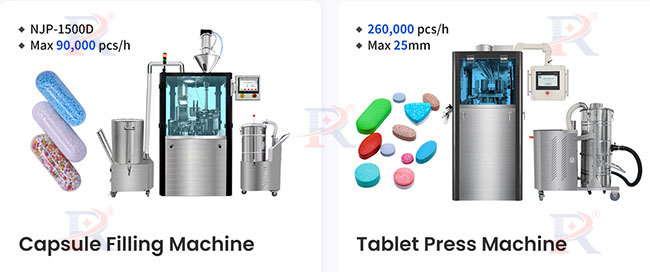
Bringing It All Together
Whenever you wonder how are vitamins made, you’ll know it’s not just a quick trip from powder to pill. There’s a complete journey:
- Ingredients are sourced from plants, fermentation tanks, or carefully controlled chemical synthesis.
- Raw materials are tested and cleared through strict quality checks.
- Powders are weighed, blended, and transformed into tablets, capsules, gummies, and more.
- Finished products are coated, polished, counted, bottled, labeled, and cartoned using modern pharmaceutical packaging equipment.
- Ongoing testing ensures that every batch remains safe and effective.
The process of making vitamins involves more than just blending ingredients – it’s a meticulous journey that combines science, technology, and precision. From the raw materials to the final packaging, each step plays a vital role in ensuring that the vitamins you take are safe, effective, and of the highest quality. Now that you understand how vitamins are made, you can recognize the effort and expertise behind each bottle, ensuring the highest level of quality and reliability.
Reference
How Are Vitamins and Supplements Made? – BodyLogicMD
https://www.bodylogicmd.com/blog/how-are-vitamins-and-supplements-made/
Dietary Supplements – MedlinePlus (U.S. National Library of Medicine)
https://medlineplus.gov/dietarysupplements.html
